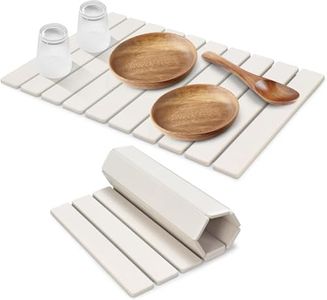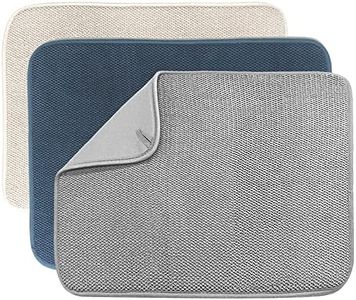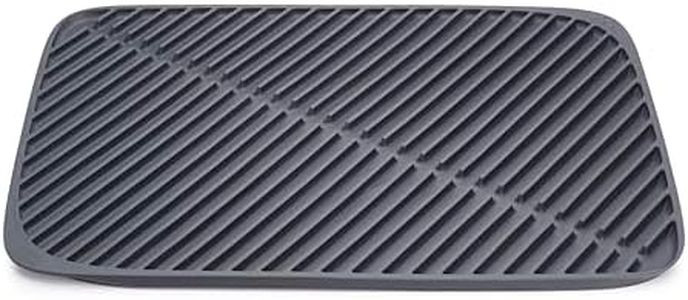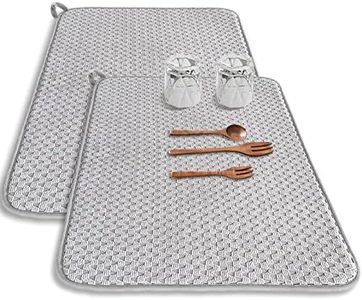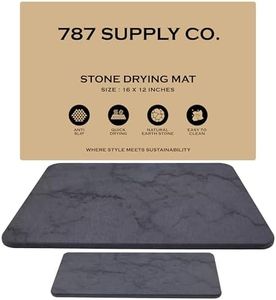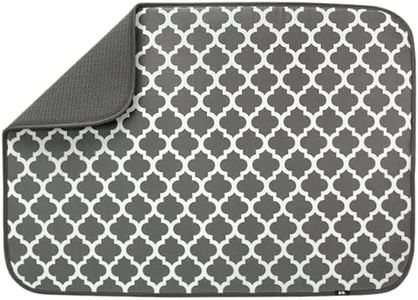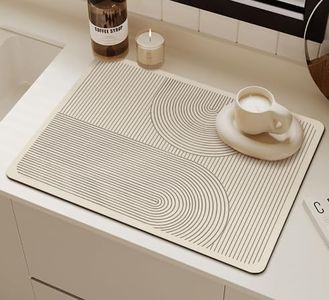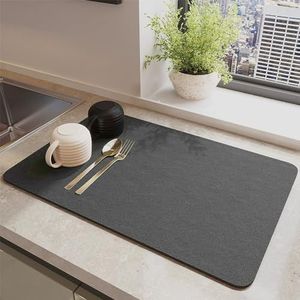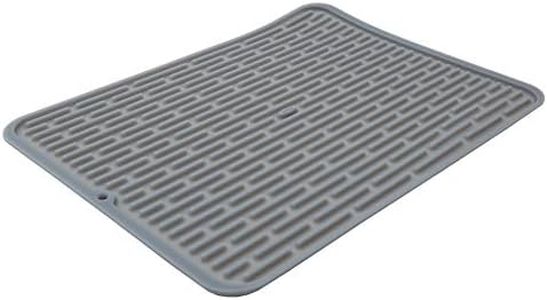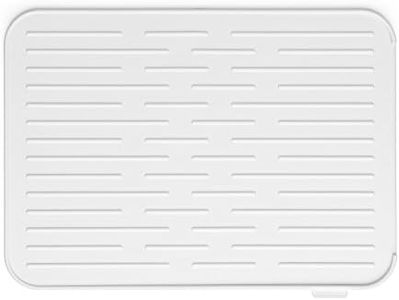We Use CookiesWe use cookies to enhance the security, performance,
functionality and for analytical and promotional activities. By continuing to browse this site you
are agreeing to our privacy policy
10 Best Dish Drying Mats
From leading brands and best sellers available on the web.Buying Guide for the Best Dish Drying Mats
Choosing a dish drying mat might seem simple, but getting the right fit for your kitchen and lifestyle can make a daily chore much easier. The right dish drying mat should efficiently absorb water, fit your space, and be easy to clean. Think about your typical dishwashing load, the countertop area you can spare, and whether quick drying or sanitation is particularly important for your household.MaterialThe material of a dish drying mat is crucial because it determines how well the mat absorbs water, how quickly it dries, and how easy it is to clean. Common materials include microfiber, silicone, and foam. Microfiber is excellent for quick water absorption and is soft on dishes, foam provides cushioning but absorbs less, while silicone is great for air circulation and easy cleaning but may not absorb as much water. If you wash lots of glasses or fragile items, a soft microfiber mat may be best; if you want a mat that can go in the dishwasher and dries quickly, silicone might be the way to go.
SizeThe size of the dish drying mat matters because it should match the amount of counter space you have and the volume of dishes you typically wash. Small mats are ideal for single people or compact kitchens, while medium and large mats can handle bigger loads and more pots and pans. Consider measuring the spot where you'll use the mat and think about how many dishes you wash at once—this will help you avoid a mat that is either too small to be useful or too large to fit comfortably.
AbsorbencyAbsorbency refers to how much water the mat can soak up before it starts to feel soggy or leaks. High-absorbency mats, usually microfiber or thick foam, are good if you hand-wash lots of items or want to avoid puddles on your countertop. Lower-absorbency mats (like silicone) keep dishes off the counter and let water evaporate rather than soak up. If you have many dishes or do not dry them immediately after washing, choose a high-absorbency mat; for occasional use, lower absorbency could be enough.
Ease of CleaningHow easy it is to clean your dish drying mat is important for hygiene and convenience. Some mats can be tossed in the washing machine or dishwasher; others need to be wiped down by hand. Silicone mats are generally the easiest to clean because they don’t stain or retain odors, while fabric and foam mats require regular laundering. If you want low maintenance, look for mats labeled as machine washable or dishwasher safe.
Drying TimeDrying time is how quickly the mat itself dries after use, which helps prevent odors and mold. Fast-drying mats, like those made from thin microfiber or vented silicone, are great if you need to reuse the mat frequently in a day or want to store it soon after use. Slower-drying mats can be fine if you’re not in a rush, but they may need more attention to stay fresh. Consider your dishwashing routine—do you wash several times a day or just once? Choose a drying time that matches your kitchen habits.
Cushioning/ProtectionCushioning is about how well the mat protects your dishes and your countertop from scratches and chips. Mats with a thick, soft padding or textured surfaces can help keep glassware safe and prevent breakage. If you have delicate dishes, look for mats that specifically mention extra cushioning. For sturdier everyday items, thinner mats will usually do the job.
StorageStorage refers to how easily the mat can be put away when not in use. Some mats are very thin and can be rolled or folded, making them simple to store in a drawer or cupboard. Others are bulkier, especially rigid or thick foam mats, and may need more space. If counter space is limited or you dislike clutter, consider a mat that's known for compact storage.
